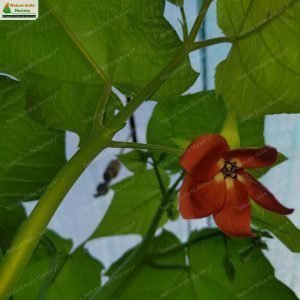Saraca asoca, commonly known as the Ashoka tree, is a small to medium-sized evergreen tree that can grow up to 25-30 feet tall. It has a dense, spreading crown with horizontal branches, and dark green, alternate, and paripinnate leaves with 4-6 pairs of oblong, lanceolate leaflets. The flowers are fragrant, orange to scarlet, and appear in dense, corymbose panicles, while the fruit is a smooth, leathery, flat pod, tapering at both ends, containing 6-8 seeds. Native to the Indian subcontinent, including India, Bangladesh, Myanmar, and Sri Lanka, the tree thrives in tropical and subtropical climates, primarily found in the central areas of the Deccan plateau, the Western Ghats, and the foothills of the Himalayas.
The Ashoka tree’s ecological significance extends beyond its physical characteristics, as it provides a valuable food source for various wildlife species, including birds and small mammals. Its fragrant flowers attract bees and other pollinators, while its seeds and pods provide food for various birds and small mammals, contributing to its success in its native habitats.
Habitat
Saraca asoca is native to the Indian subcontinent, including India, Bangladesh, Myanmar, and Sri Lanka, and thrives in tropical and subtropical climates.
Planting and Care
-
Propagation: Through seeds, stem cuttings, and air layering.
-
Soil Preference: Prefers well-drained, fertile soils. Can tolerate a range of soil types.
-
Sunlight and Water: Thrives in full sun to partial shade. Requires regular watering, especially during dry periods.
Additional Information
-
Economical Values: Bark is used to treat gynecological problems, such as menorrhagia and uterine fibroids. Flowers and seeds are used in traditional remedies for various ailments.
-
Ornamental Value: Widely planted in gardens and public spaces for its attractive flowers and foliage.
-
Other Uses: Wood is used for making small articles. Pods are used as forage.
-
Wildlife Significance: Attracts pollinators like bees and other pollinators. Seeds and pods provide food for various birds and small mammals.







